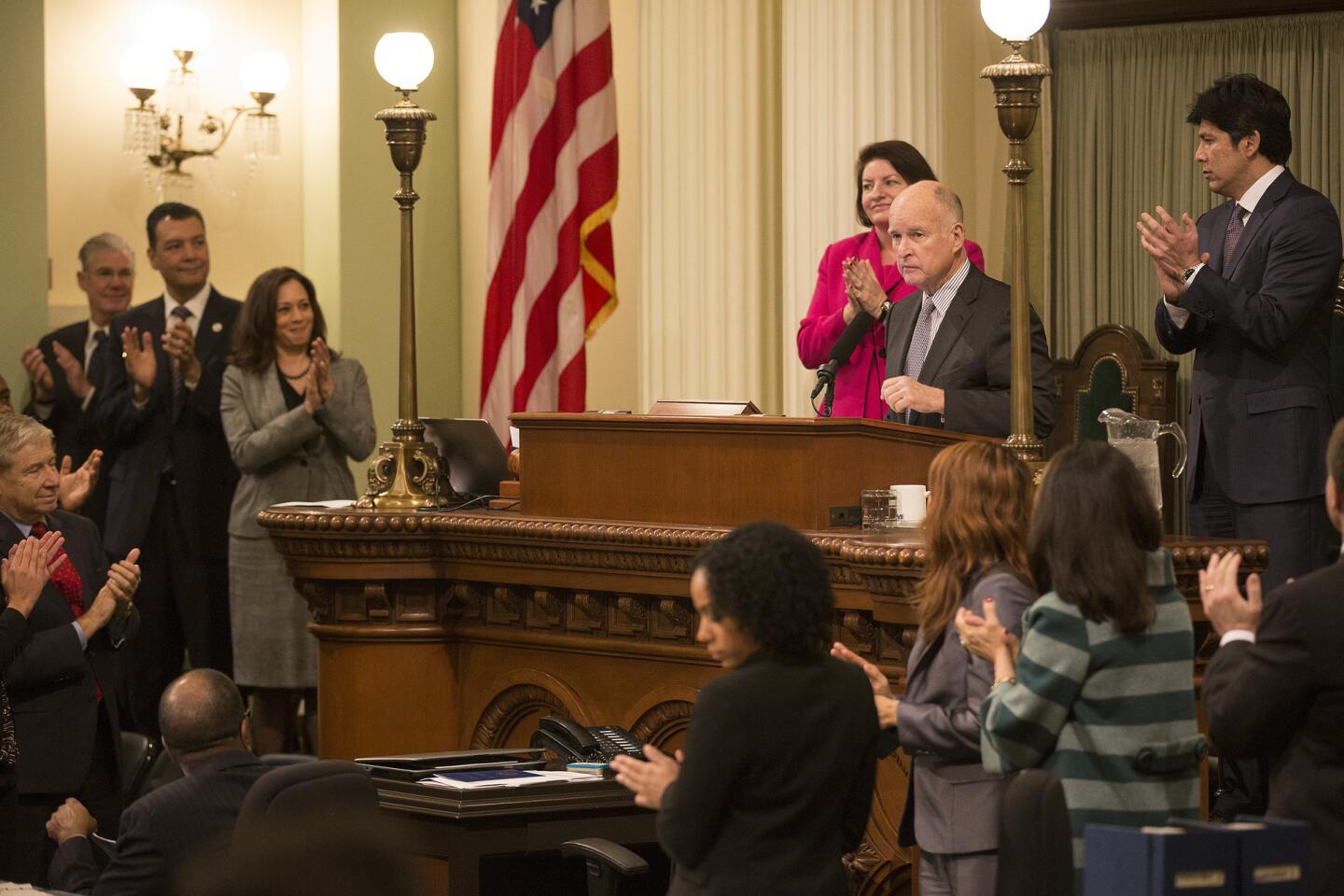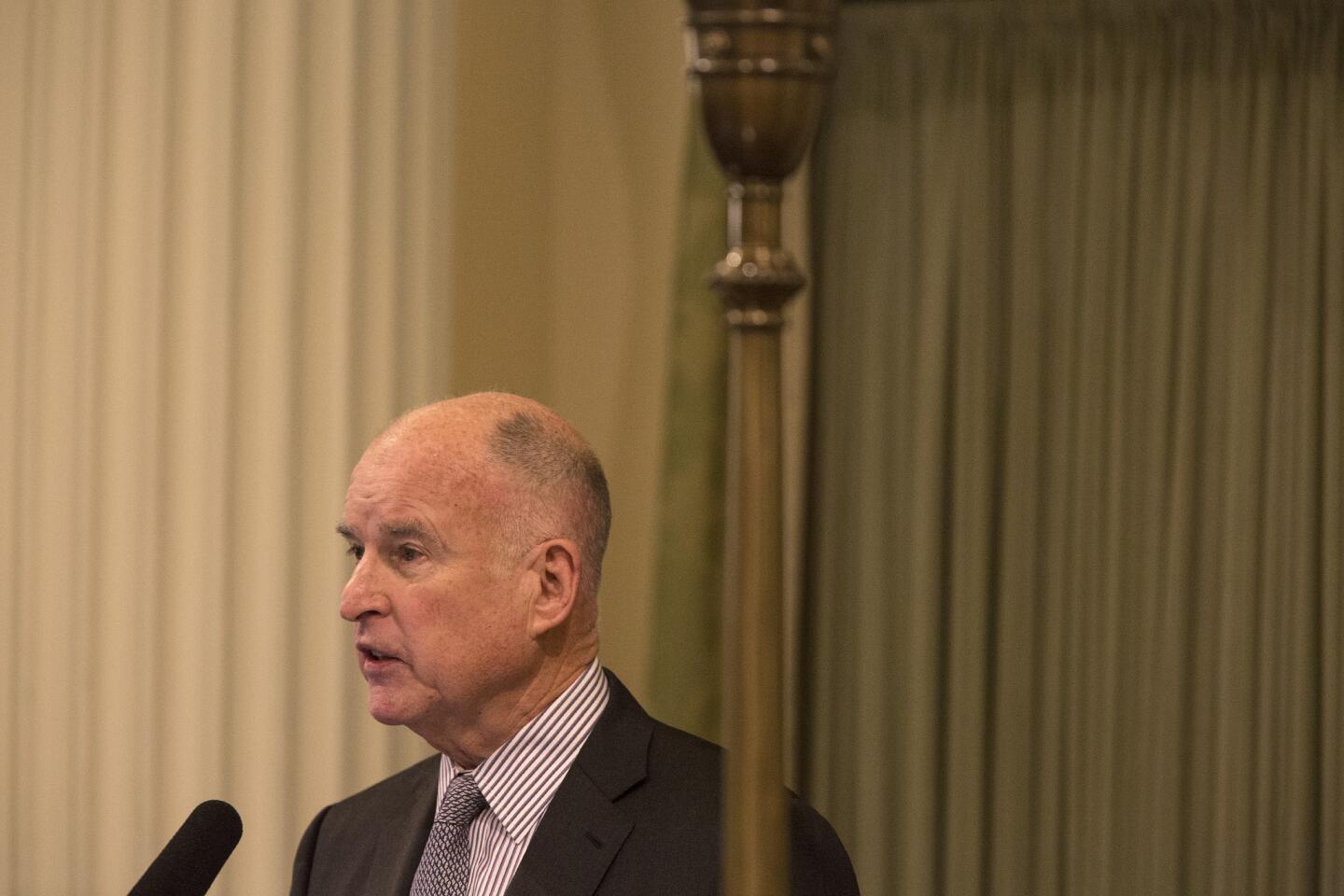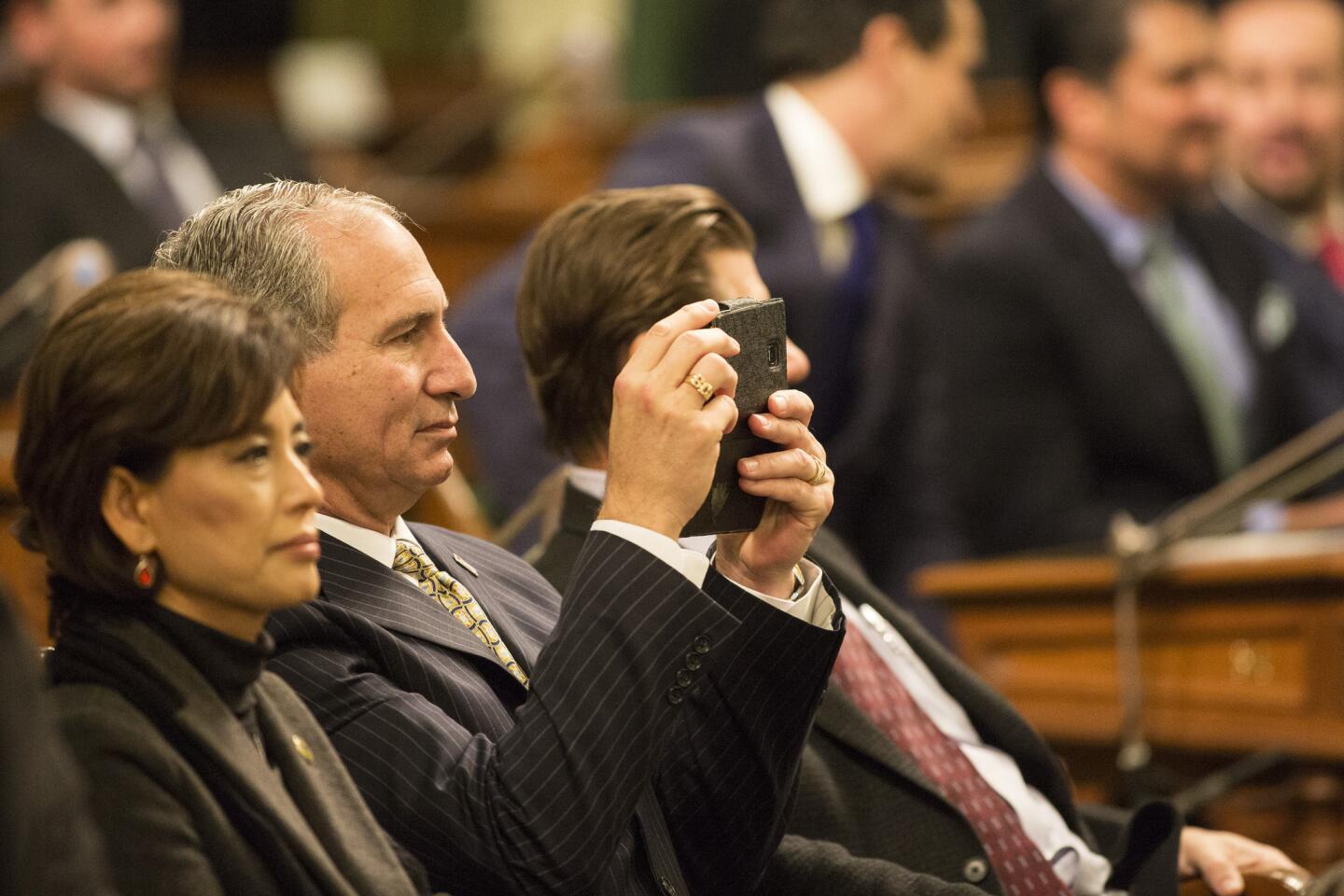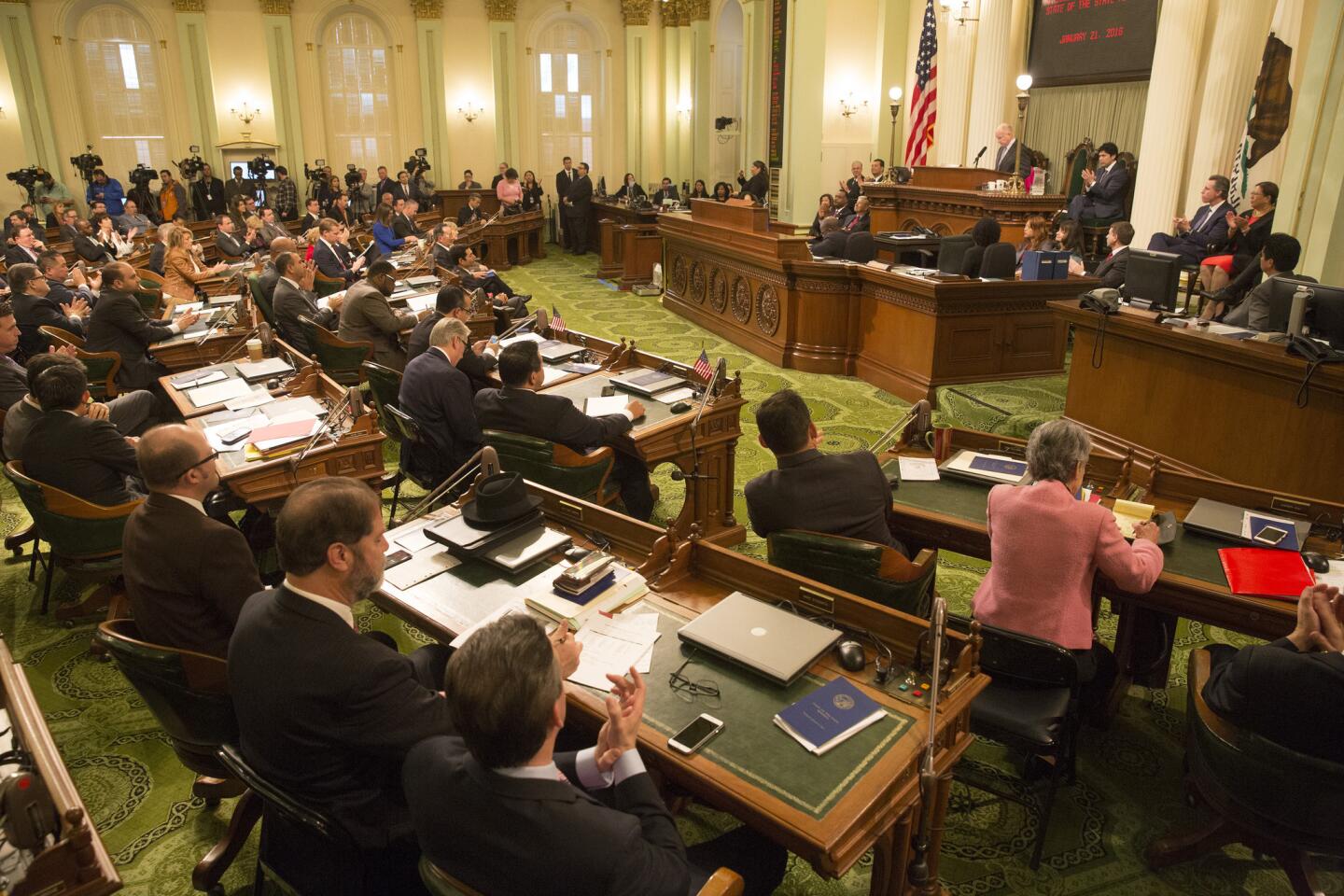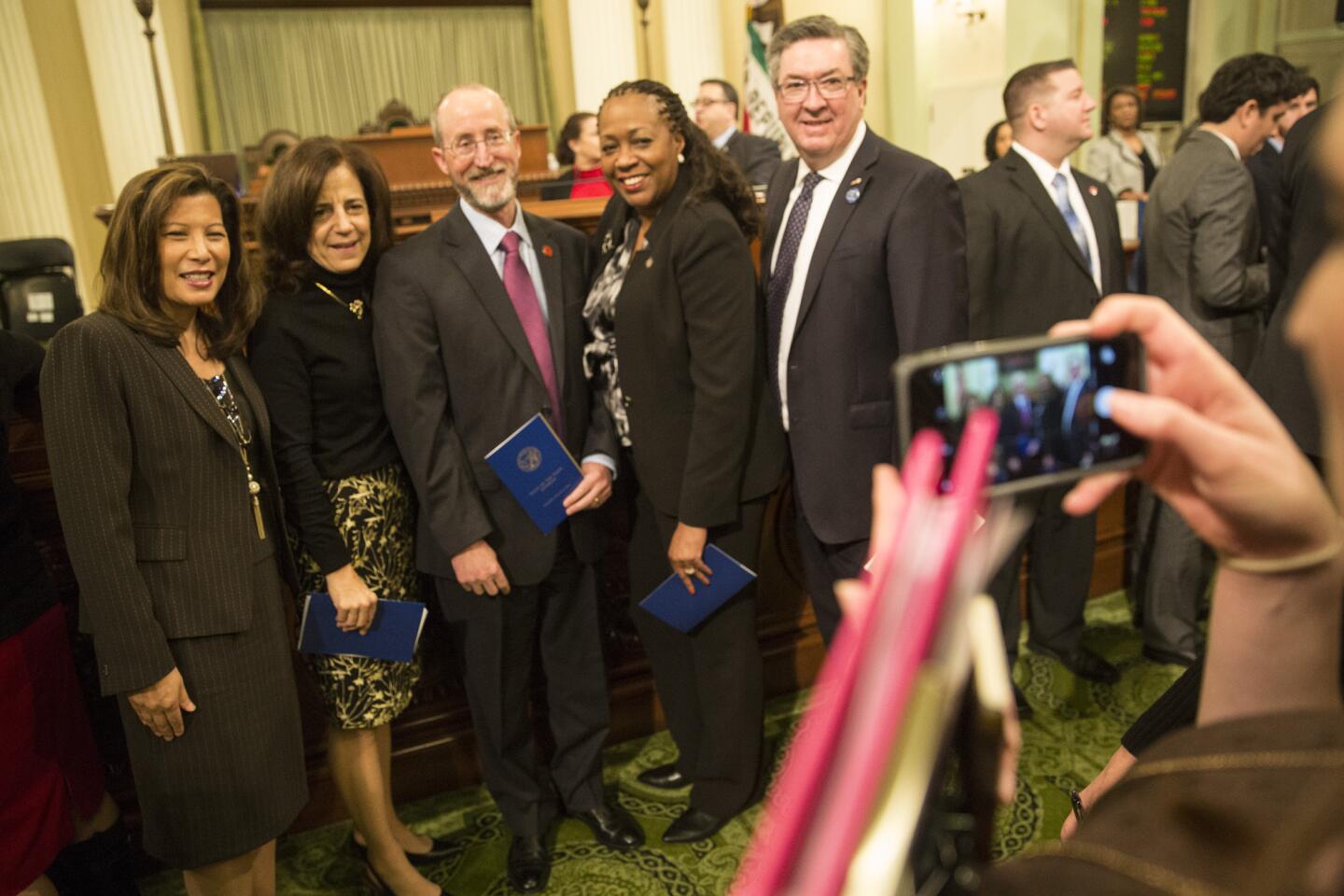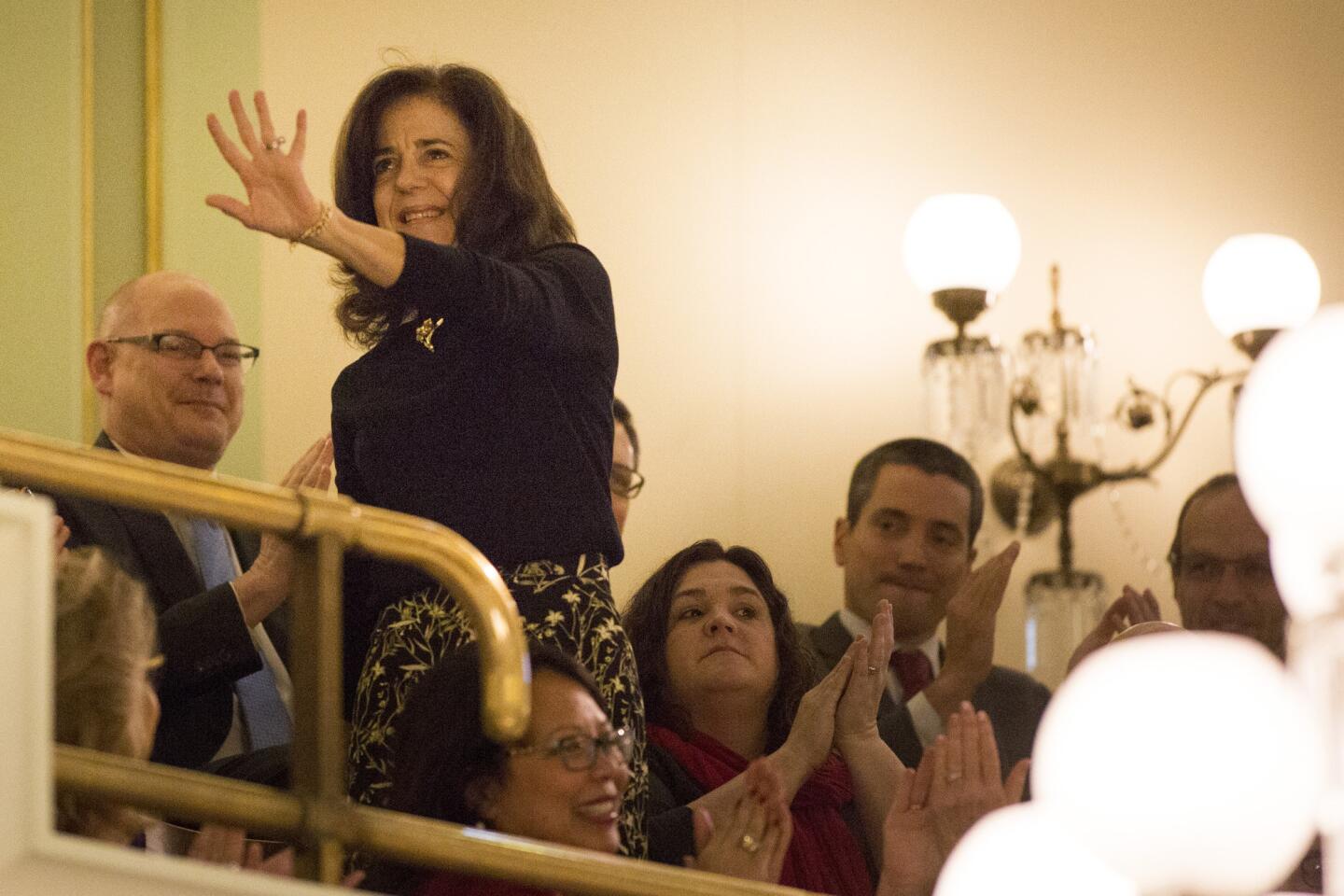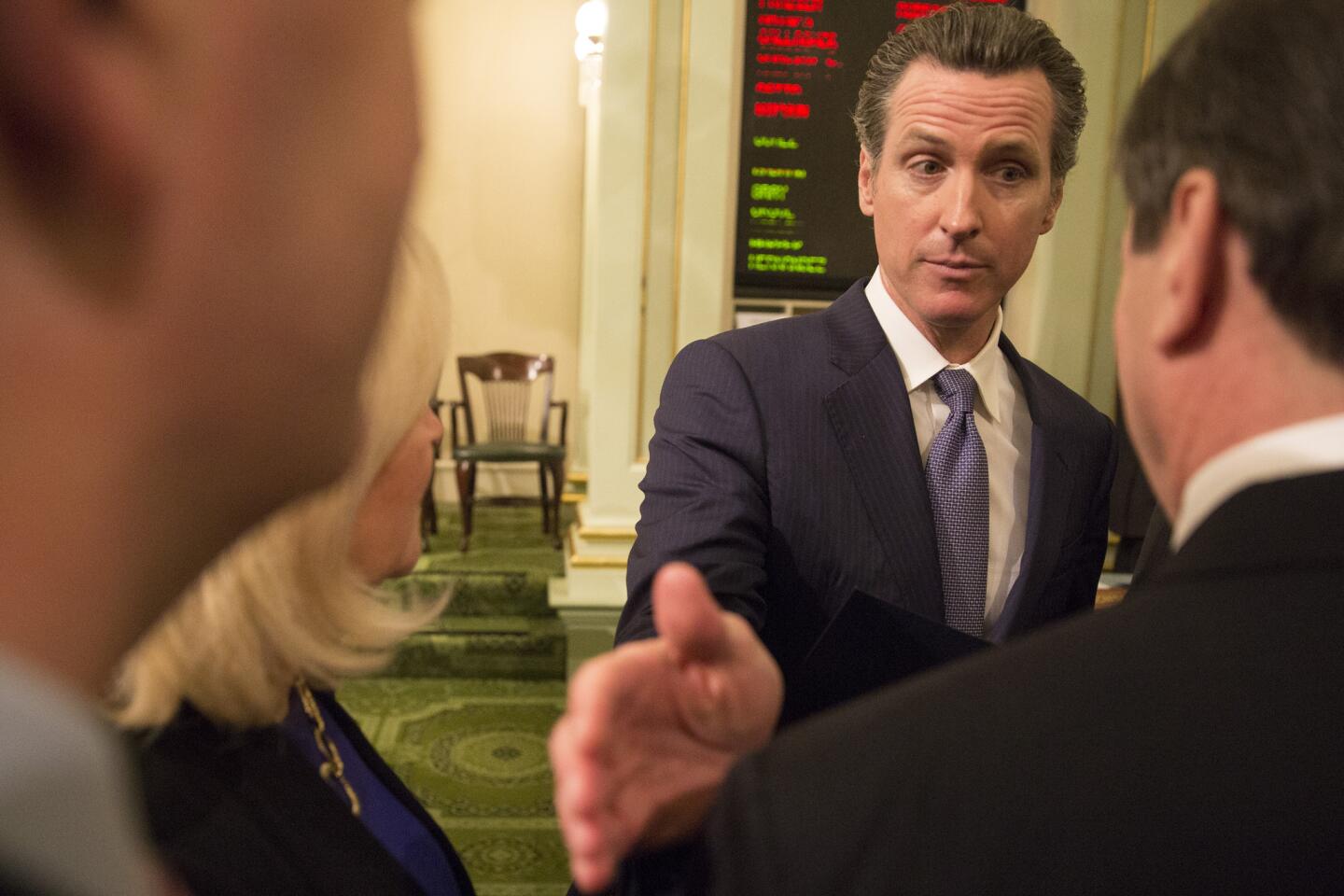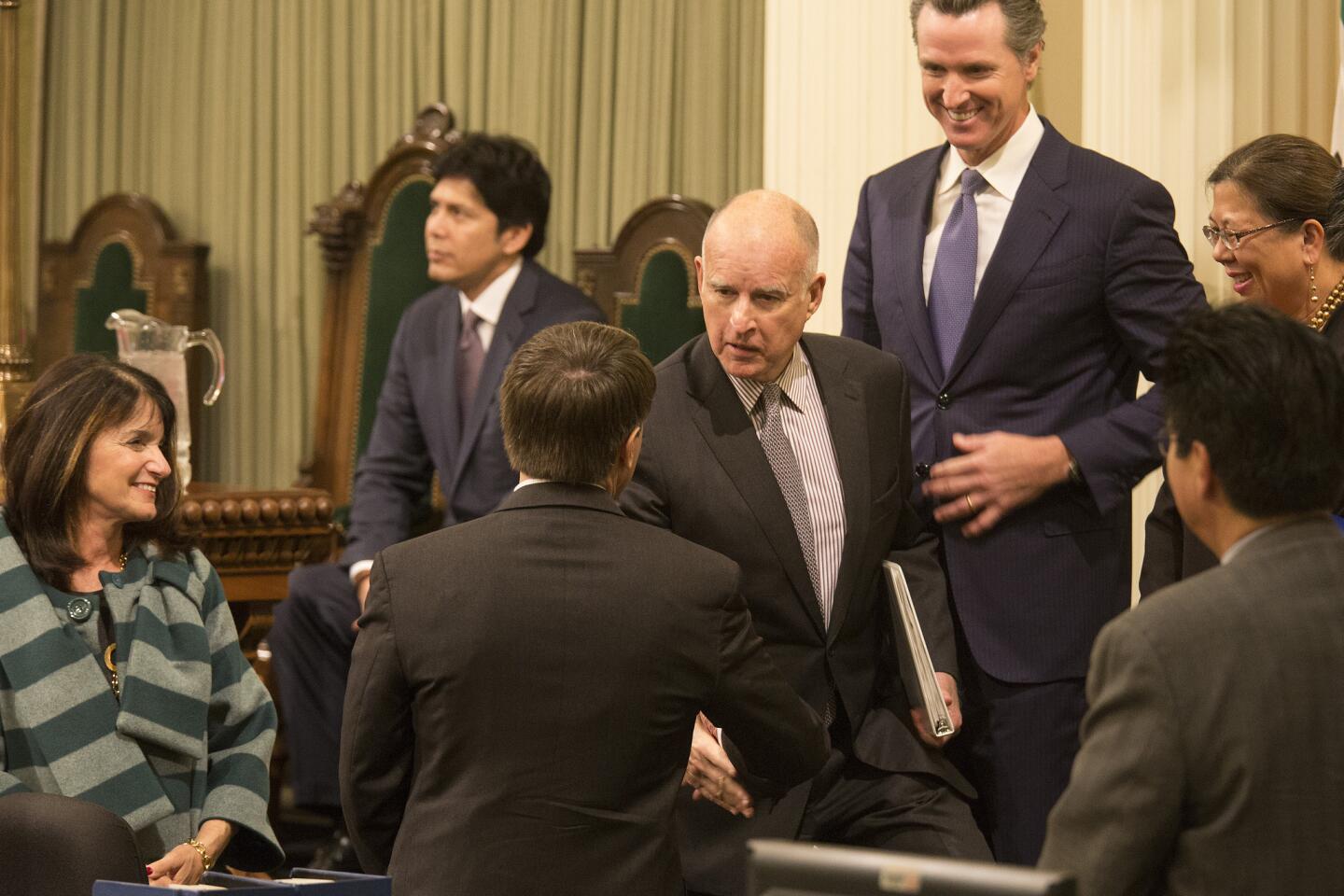Gov. Brown urges steps to end ‘zigzag of spend-cut-spend’ in California
- Share via
Reporting From Sacramento — In a short speech with a long view of California, Gov. Jerry Brown used his State of the State address to challenge lawmakers to better balance the cyclical nature of success and setback that has dominated state government for the better part of two decades.
“The challenge is to solve today’s problems without making those of tomorrow even worse,” the governor said in his annual speech delivered from the Assembly chamber Thursday.
Brown, interrupted by occasional applause from legislators, touched on themes that included California’s drought and the challenges of income inequality and terrorism.
Join the conversation on Facebook >>
But he purposely stopped short of proposing new state government projects, leaving the impression he was more interested in raising awareness than sparking action.
“You are not going to hear me talk today about new programs,” the governor said. “Rather, I am going to focus on how we pay for the commitments we have already made.”
That focus included not only long-term items like pensions for public employees, but also the more recent expansion of healthcare for low-income families through the Medi-Cal program and for others through the Covered California healthcare exchange.
Brown boasted that the state had “wholeheartedly embraced” President Obama’s Affordable Care Act. “This is an historic achievement,” he said to applause from Democrats in the Assembly and Senate.
The speech came two weeks after Brown sent a $170.7-billion budget to the Legislature for the fiscal year that begins in July.
That spending plan acknowledges another year of better-than-forecast tax revenue — of $5.9 billion more than lawmakers had assumed last summer. The governor has asked legislators to put an extra payment of $2 billion into reserves or debt repayment rather than commit it to new programs or an expansion of existing ones.
“If we are to minimize the zigzag of spend-cut-spend that this tax system inevitably produces,” Brown said, “we must build a very large reserve.”
Whether the governor can convince more liberal Democrats in the Legislature of that path forward remains unclear.
Brown “takes most of the discretionary revenues off the table, rather than investing them in critical, critical services that will help create a shared prosperity,” state Sen. Holly Mitchell (D-Los Angeles) said.
Perhaps anticipating such criticism, the governor used his speech to tout several efforts that he said would lessen the impact of income inequality — including the new statewide minimum wage of $10 an hour and a tax credit for the working poor.

In a short speech with a long view of California, Gov. Jerry Brown used his State of the State address to challenge lawmakers to better balance the cyclical nature of success and setback that has dominated state government for the better part of two
“In the face of this growing inequality, California has not been passive,” he said, arguing that the roots of the problem reach far beyond the state’s borders.
Even so, some Democratic lawmakers criticized Brown for not speaking to the needs of Californians like low-income seniors and those who are developmentally disabled. And others said a glaring omission was what to do about residents who increasingly are priced out of owning a home.
“We’ve got a housing crisis in California, and there wasn’t a word about housing,” state Sen. Mark Leno (D-San Francisco) said.
SIGN UP for the free Essential Politics newsletter >>
Brown veered from his broad rhetoric at two specific points in his speech to urge an end to the legislative logjam over new revenues for healthcare funding and transportation — a situation created in part because his tax and fee proposals require a super-majority vote in both houses of the Legislature.
Democrats and Republicans should simply “bite the bullet” and agree to the new revenues, he said.
But Assembly GOP Leader Chad Mayes of Yucca Valley called it a “fundamentally flawed” premise to assume that new taxes were a prerequisite on either issue.
“We want a seat at the table,” Mayes said of negotiations over revamping an existing $1-billion tax on health insurance companies. “We’re going to continue to have those conversations with the administration and with Democrats in the Legislature, but the details matter.”
Finding consensus on issues that extend beyond the immediate politics also remains tough in Sacramento.
The governor only briefly referred to his controversial plan to build underground tunnels to transport water around the Sacramento-San Joaquin Delta, and was silent on the funding troubles and political opposition facing the state’s high-speed rail project.
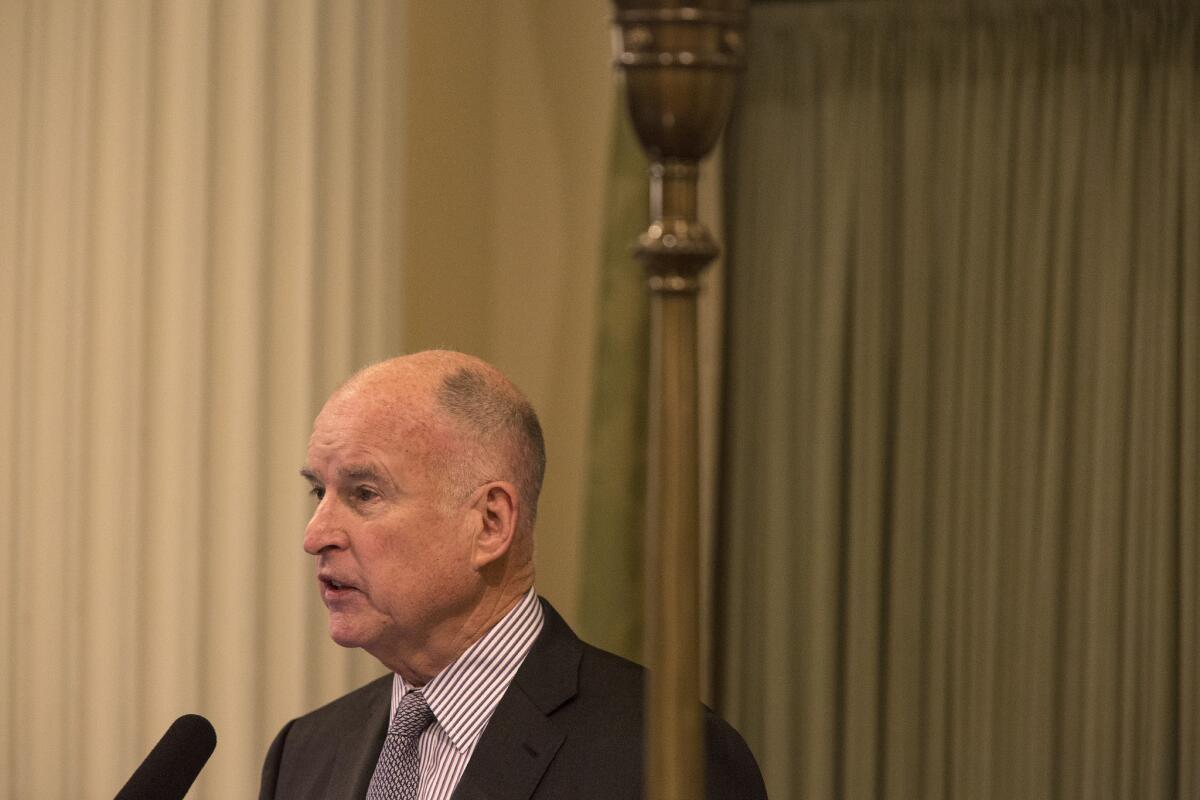
Gov. Jerry Brown delivers his State of the State address before a joint session of the California Legislature in Sacramento on Thursday.
The lack of new proposals in the State of the State address — in contrast to grand pronouncements offered by Brown’s immediate predecessors — may align with the general principles of legislative leaders, who for the most part stand with the Brown administration’s governing philosophy.
“There’s a lot of work before us,” Senate leader Kevin de León (D-Los Angeles) said. “It doesn’t have to be driven by big policy pronouncements.”
The governor seemed to acknowledge that there was plenty to keep lawmakers occupied through the end of his term in 2018 in a joke he made in the early moments of Thursday’s speech.
“Three more years to go,” Brown said. “That is, unless I take my surplus campaign funds and put a ballot initiative on the November ballot to allow four-term governors to seek a final, fifth term!”
Times staff writers Melanie Mason and Christine Mai-Duc contributed to this report
Follow @johnmyers on Twitter and sign up for our daily Essential Politics newsletter
MORE
Gov. Gloomy’s take on California: Dark shadows beyond the silver lining
Complete coverage of Gov. Jerry Brown’s State of the State
More to Read
Get the L.A. Times Politics newsletter
Deeply reported insights into legislation, politics and policy from Sacramento, Washington and beyond. In your inbox three times per week.
You may occasionally receive promotional content from the Los Angeles Times.
